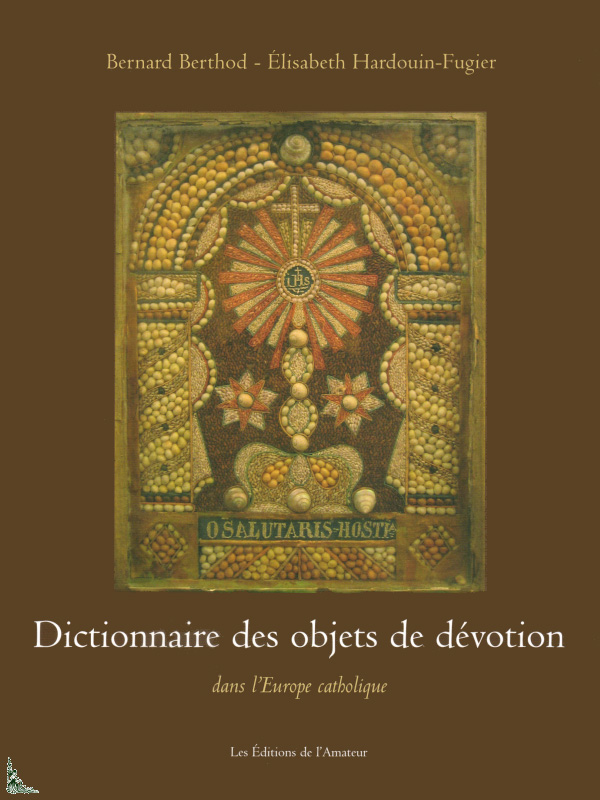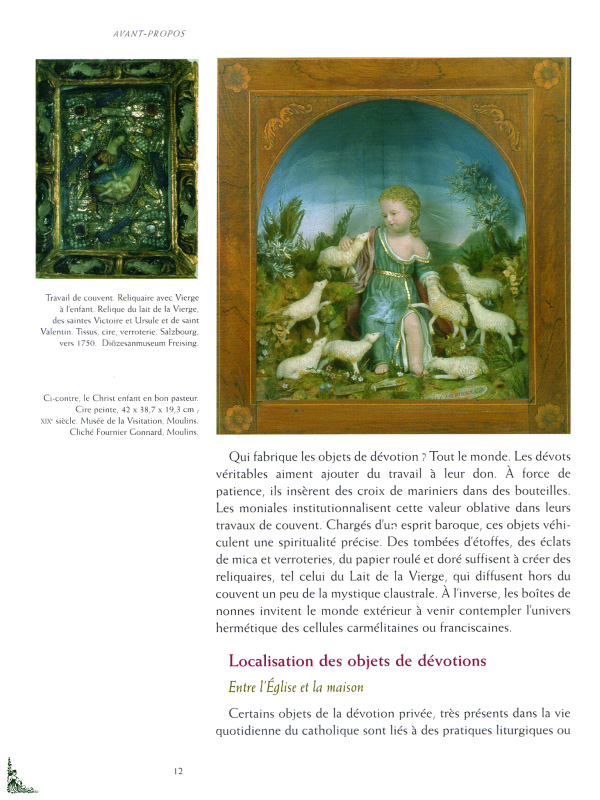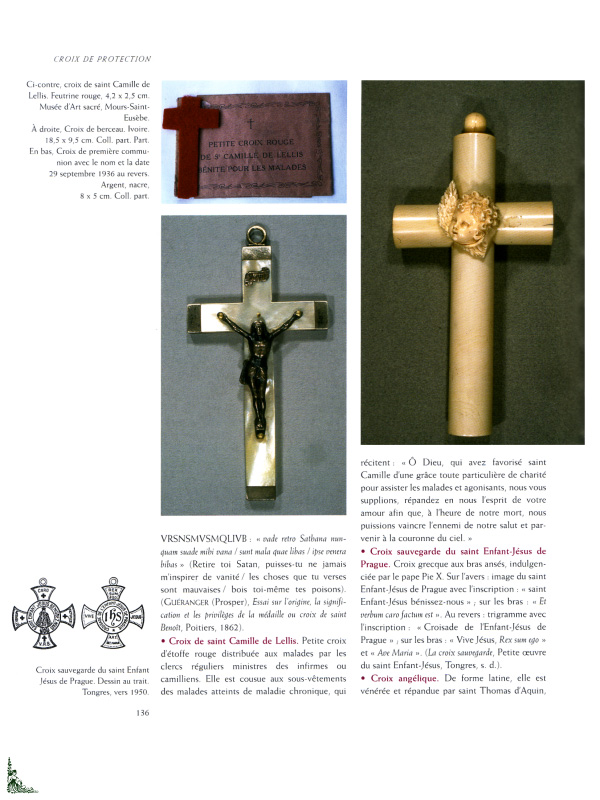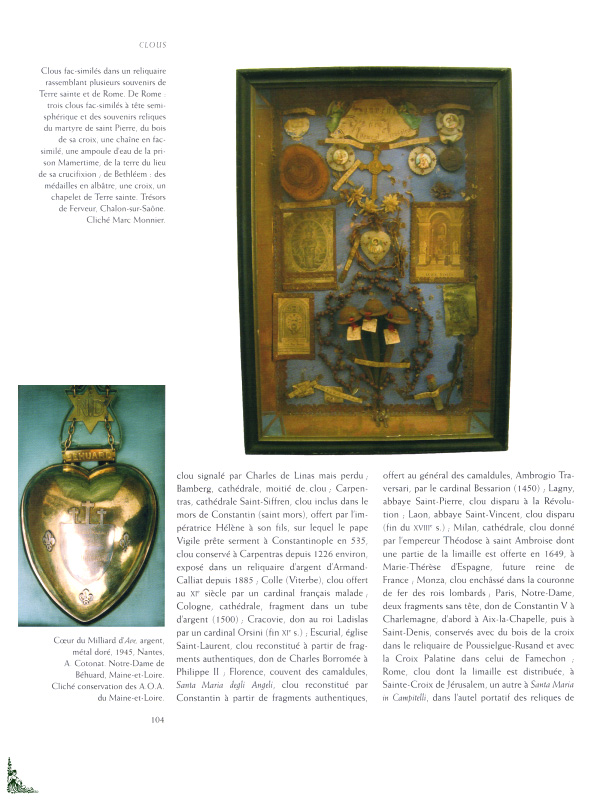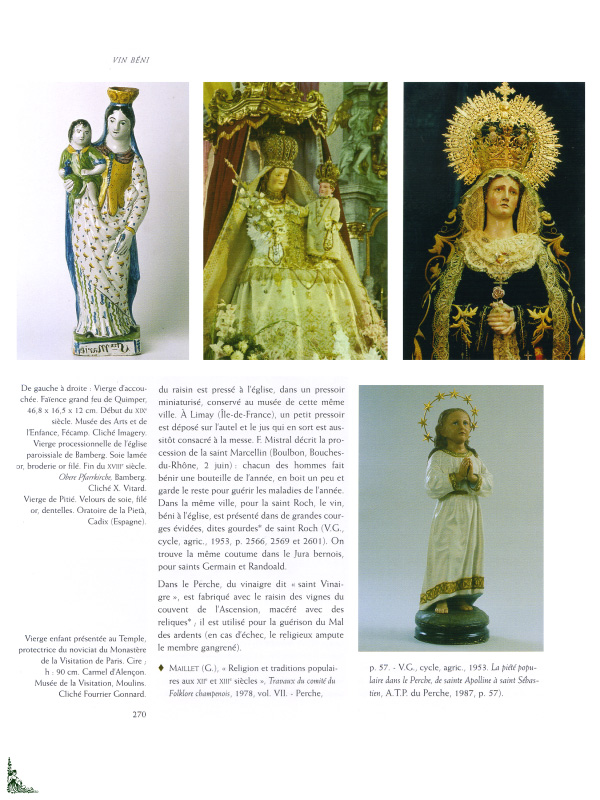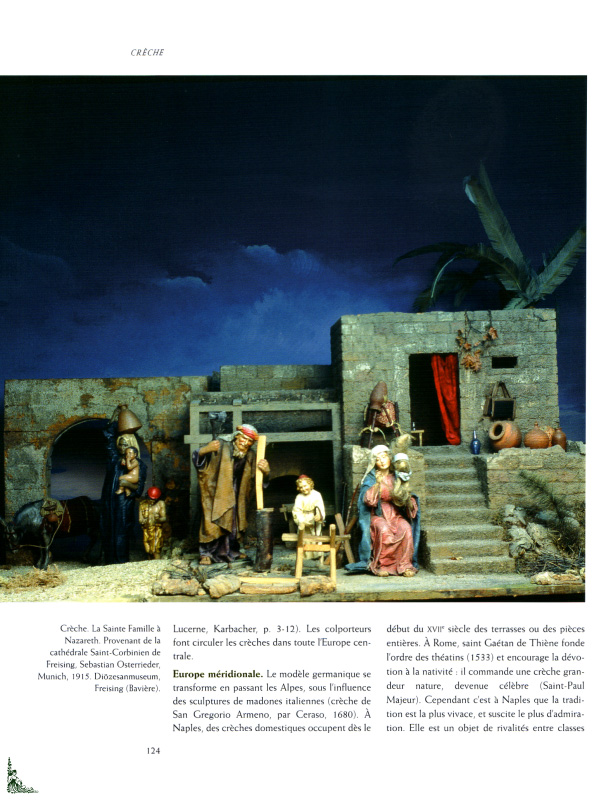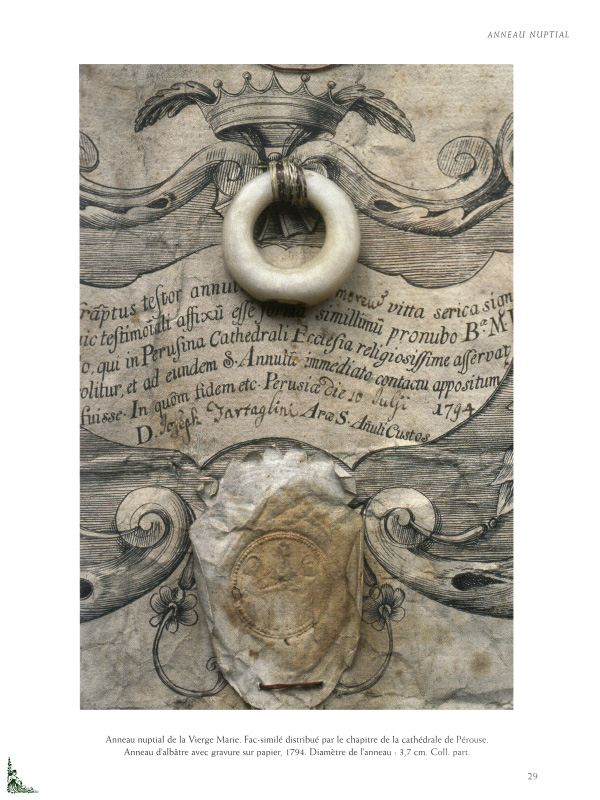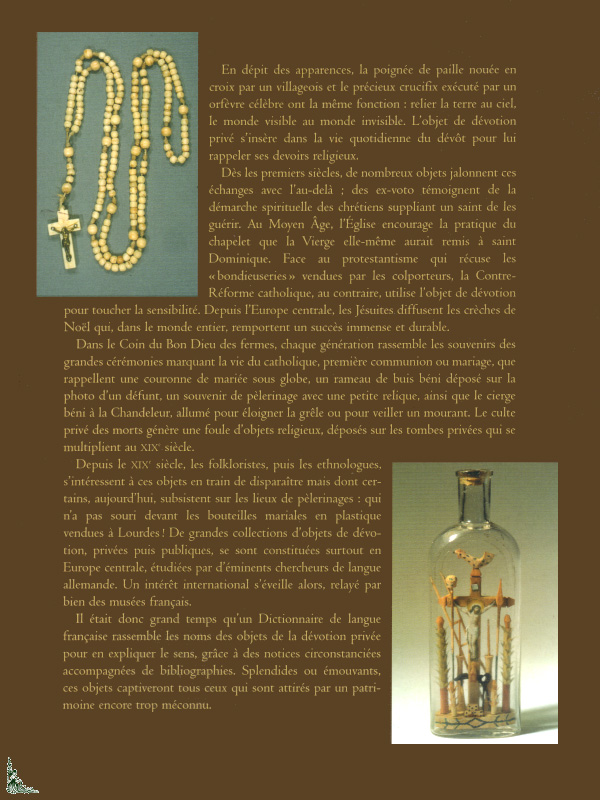Dictionary of devotional objects in Catholic Europe
Book information
| Authors : | Bernard Berthod & Elisabeth Hardouin-Fugier |
| Publisher : | Ed. de l'Amateur (2006) |
| Binding : | Softcover (280 full color pages) 8 inches x 10 inches |
| Language : | French |
| ISBN : | 978-2-85917-435-4 |
| EAN : | 9782859174354 |
Editorial Reviews
Dictionary of devotional objects in Catholic Europe, by B. Berthod and E. Hardouin-Fugier, Ed. de l'Amateur, 8 inches x 10 inches ( 21 cm x 26 cm ), softcover book with 280 full color pages
This softcover book with 280 color pages presents the symbols and objects of the Christian Faith.
Despite appearances, handfuls of straw tied crosswise by a villager and the precious crucifix executed by a famous goldsmith have the same function: connect the earth to the sky, visible to the invisible world.
From the first centuries, many objects punctuate these discussions with the afterlife; ex-voto reflects the spiritual journey of the Christian holy begging a Saint to heal.
In the Middle Ages, the church encourages the practice of the Rosary that the Virgin herself had given to St. Dominic. Face to Protestantism, which refuses the "religious trinkets" sold by peddlers, the Catholic Counter-Reformation; on the contrary, use the object of devotion to touch sensitivity.
From Central Europe, the Jesuits spread the Christmas crib, worldwide, won a huge success.
From Romanticism, folklorists and anthropologists are interested in these items disappearing although some of them remains today in places of pilgrimage: who did not smiled at the Marian plastic bottles sold in Lourdes?
Large collections of objects of devotion, private or public, were consisting mainly in Central Europe. An international interest aroses, relayed by many French museums.
It was time that a French language dictionary gathers the names of nearly 800 objects of private devotion to explain their meaning through circumstantial notices.
The French texts are written by Bernard Berthod and Elisabeth Hardouin-Fugier.
 Description française
Description française
Dictionnaire des objets de dévotion dans l'Europe Catholique
Détails du livre
| Auteur : | Bernard Berthod & Elisabeth Hardouin-Fugier |
| Éditeur : | Ed. de l'Amateur (2006) |
| Reliure : | Broché (280 pages couleurs) 21 cm x 26 cm ( 8 inches x 10 inches ) |
| Langue(s) : | Français |
| ISBN : | 978-2-85917-435-4 |
| EAN : | 9782859174354 |
Description
Dictionnaire des objets de dévotion dans l'Europe Catholique, de B. Berthod et E. Hardouin-Fugier, Ed. de l'Amateur, 21 cm x 26 cm, broché avec 280 pages couleurs
Cet ouvrage de 280 pages couleurs présente les symboles et objets de la Foi Chrétienne.
En dépit des apparences, la poignée de paille nouée en croix par un villageois et le précieux crucifix exécuté par un orfèvre célèbre ont la même fonction : relier la terre au ciel, le monde visible au monde invisible.
Dès les premiers siècles, de nombreux objets jalonnent ces échanges avec l'au-delà ; des ex-voto témoignent de la démarche spirituelle des chrétiens suppliant un saint de les guérir.
Au Moyen-âge, l'église encourage la pratique du chapelet que la Vierge elle-même aurait remis à saint Dominique. Face au protestantisme, qui récuse les « bondieuseries » vendues par les colporteurs, la Contre-réforme catholique, au contraire, utilise l'objet de dévotion pour toucher la sensibilité.
Depuis l'Europe centrale, les Jésuites diffusent les crèches de Noël qui, dans le monde entier, remportent un succès immense.
Dès le Romantisme, les folkloristes, puis les ethnologues s'intéressent à ces objets en train de disparaître mais dont certains subsistent aujourd'hui sur des lieux de pèlerinages : qui n'a pas souri devant les bouteilles mariales en plastique vendues à Lourdes ?
De grandes collections d'objets de dévotion, privées puis publiques, se sont constituées surtout en Europe centrale. Un intérêt international s'éveille alors, relayé par bien des musées français.
Il était donc temps qu'un dictionnaire de langue française rassemble les noms de près de 800 objets de la dévotion privée pour en expliquer leur sens grâce à des notices circonstanciées.
Les textes en Français sont de Bernard Berthod et Elisabeth Hardouin-Fugier.


